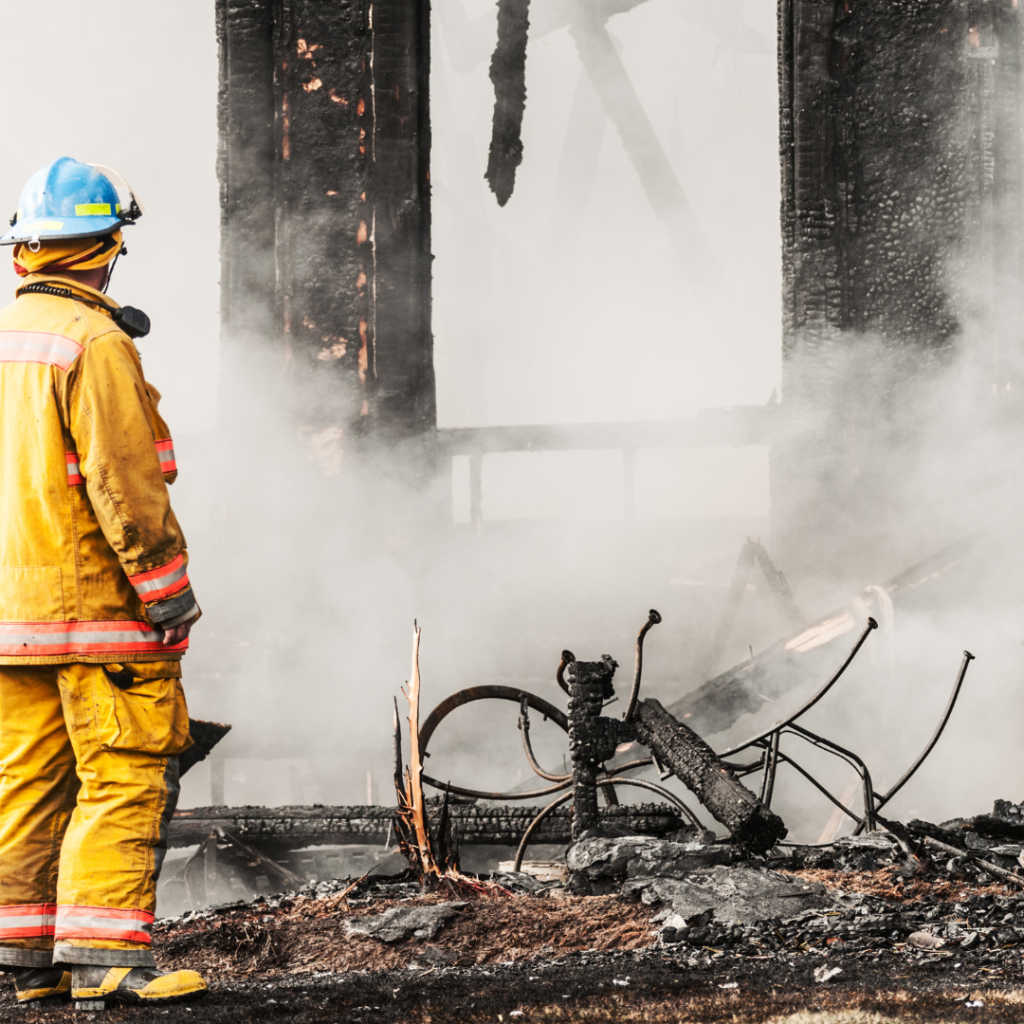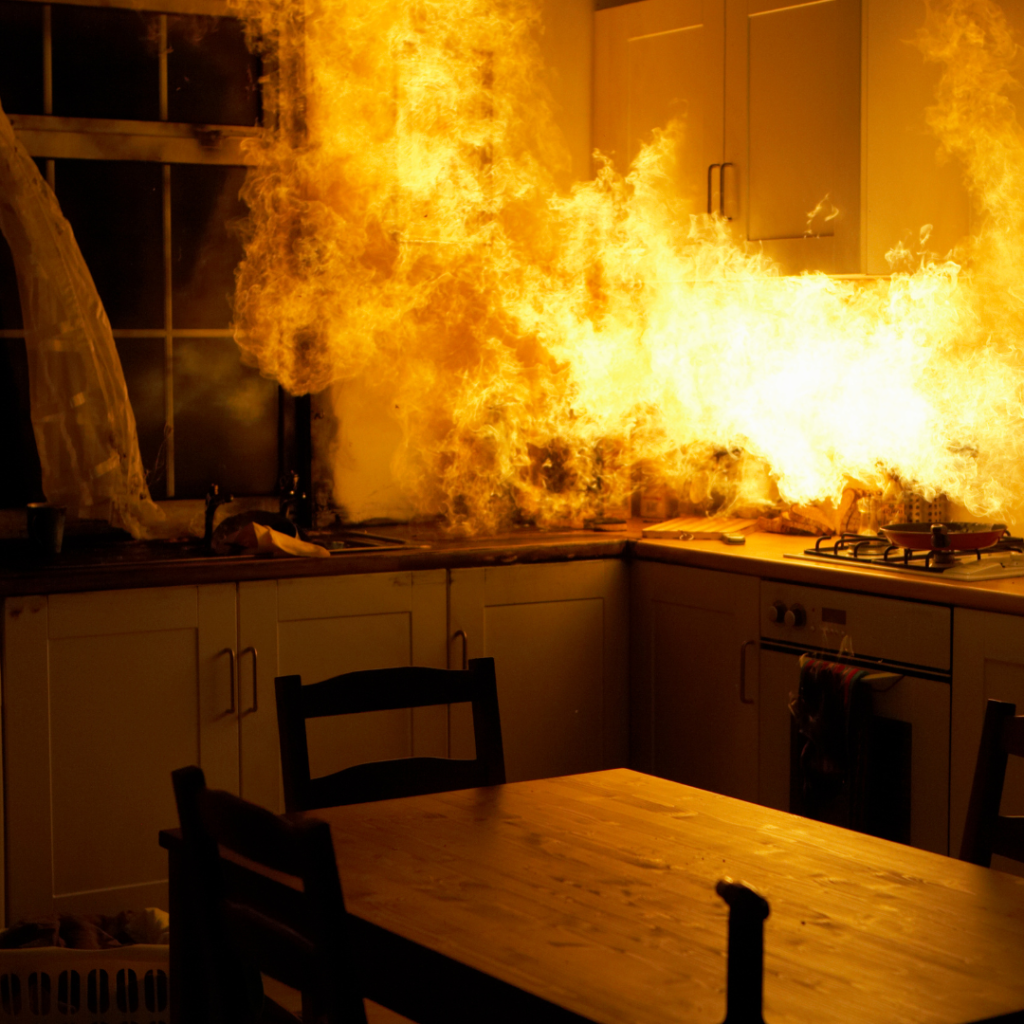🏡 Why Fire Insurance Matters
Your home is likely your most significant investment. Unexpected events like electrical faults or fires can lead to substantial financial losses. For instance, consider Mr. Lee, who purchased a RM650,000 home and invested RM290,000 in furnishings. His bank mandated fire insurance to cover the loan amount. However, many homeowners, like Mr. Lee, might not realize that such policies may not fully cover home contents or renovations.

Understanding the different types of property insurance is crucial to ensure comprehensive protection.
TYPES OF PROPERTY INSURANCE
In Malaysia, there are three types of property insurance covers available for house owners to select from:
• Fire insurance
• Houseowners’ Insurance
• Householders’ Insurance or content insurance
Fire insurance is designed to provide protection against material damage to properties such as buildings, contents such as household equipment, fixtures and fittings.
• Fire insurance covers:
• Damage caused by fire and lightning
• Explosions from domestic boilers or gas used for domestic purposes
Optional extensions (with additional premiums) include: 
• Riot and strike
• Malicious damage
• Aircraft damage and falling objects
• Impact damage (excluding own vehicles)
• Bursting or overflowing of water tanks, apparatus, and pipes
• Natural disasters like earthquakes, volcanic eruptions, hurricanes, typhoons, cyclones, windstorms, and floods
• Subsidence and landslip   
The Houseowner’s Insurance cover is for owners of residential properties.
Houseowner’s Insurance
Designed for residential property owners, this policy covers: 
• The building against perils covered by the fire policy (excluding riot, strike, malicious damage, subsidence, and landslip unless resulting from earthquakes or volcanic eruptions)
• Theft, provided there is forcible and violent entry
• Loss of rent if the building becomes uninhabitable due to damage
• Liability to the public for bodily injury or property damage 
Optional extensions:
• Riot, strike, and malicious damage
• Subsidence and landslip  
The Householders’ Insurance cover is almost identical to Houseowners’ Insurance, but the protection is meant for the contents and not for the building.
Householder’s Insurance
This policy focuses on the contents within your home, making it ideal for renters. It covers:  
• Household contents against perils similar to those in the houseowner’s policy
• Valuable items like jewelry, antiques, and collectibles (subject to certain limits and conditions) 
To avoid underinsurance:
• For Buildings: Insure for the total cost of rebuilding, including professional fees and debris removal.
• For Contents: List all possessions and estimate their replacement costs.
Regularly update your policy to reflect renovations, new purchases, or changes in property value. Underinsurance can lead to proportional claim settlements, where the insurer applies the “average clause,” reducing payouts based on the ratio of the insured sum to the actual value.
This policy would also be appropriate to renters as the landlord’s policy only covers the building and not the possessions of the renters.
How much should I insure for?
It is important to ensure your property is at the correct amount. When insuring your house, the sum insured should be the total cost to rebuild or reinstate it and including the professional fees and removal of debris. The sum insured value is not the actual property value, but rather the cost of reconstruction of your home.
If any renovations have been made to your property, you are advised to indicate the amount (cost of renovation) as well. If your property has unique or special design features and/or have extensive renovations and/or have complex structures affixed, you are advised to obtain professional advice for a more accurate assessment of your property.
What is a reinstatement clause?
Reinstatement cost refers to the cost of reinstating the building back to its original condition. This means that the damaged property or asset can only be replaced with a new asset of the same kind, type, and specifications.
For example, if your furniture was damaged in a fire, you cannot get the reinstatement cost of a Television set. The insurance company will not pay for the cost of replacing the damaged asset with a more advanced one as the older asset did not possess the same advanced technology at the time of policy purchase.
Understanding the Reinstatement Value Clause
This clause ensures that, in the event of a loss, the insurer will cover the full cost of repairing or replacing the damaged property without deductions for depreciation, provided the sum insured is adequate. However, if the property is underinsured, the payout will be proportionally reduced.
WAYS YOU CAN BE UNDERINSURED
- Insured value is less than the rebuilding cost (excluding land value)
- Failure to account for inflation in construction costs
- Unreported renovations or home improvements
- Neglecting to inventory and value home contents
- Not obtaining additional coverage for high-value items

Information Typically Required by Insurers
When applying for property insurance, be prepared to provide:
1. History of any previous losses or claims
2. Occupancy details (e.g., owner-occupied, rented)
3. Property description and usage
4. Construction details (materials used, age of the building)
5. Location specifics (e.g., proximity to fire stations, flood-prone areas) 
📞 Need Assistance?
For personalized advice or to obtain a quote, contact Amana Sdn Bhd:
• Address: 101A, Jalan Batu Tiga Lama, Kawasan 16, 41300 Klang, Selangor
• Phone: +6016 332 1488 / +603 3341 5891
• Email: amanaklang@gmail.com / ask@amana.com.my











